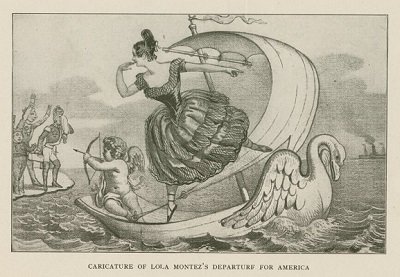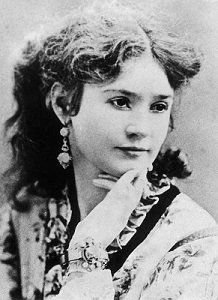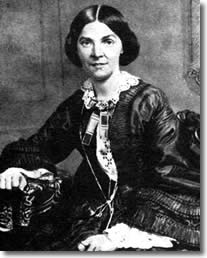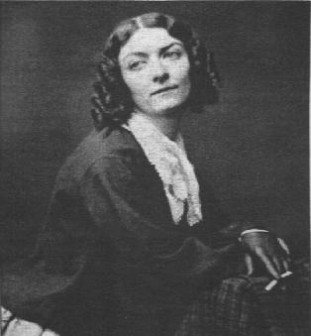Lola Montez, the Spider Woman – Part 2
This is part 2 of our article about Lola Montez. To read part one, click here.

To say that Lola was unpopular in Bavarian society would be putting it mildly. Her extravagant lifestyle and loose manner scandalised the court, as much as her radical politics. The outrage at this foreigner who had come in and bewitched their aged king became even more pronounced the following year in 1847, when Ludwig granted her the title of Countess of Landsfeld. However Ludwig had a strong will of his own, and opposition to the affair simply strengthened his own feelings on the matter. Lola soon began to use her influence for her own ends, mostly for liberal causes such as increasing the salaries of school-teachers but also as a tool in a long-running feud she had with the Jesuits. Though she had been raised a Protestant, her pose as a Spanish noblewoman meant that she was masquerading as a Catholic, and the origins of the feud seem to have come from their attempt to recruit her as an agent, and her predictably explosive response to it. Simply the fact that she was using her influence over the king was enough to set alarm bells ringing, however, and the Bavarian intelligence service soon found itself digging up whatever dirt it could on Lola – and there was a lot of dirt to dig up. Confronted with this evidence, the king was shaken, but he eventually came down on Lola’s side. But in 1848 revolution was beginning to sweep across Europe, and all across Germany liberals were taking to the streets demanding reforms. In Bavaria, counter-protests began to take hold not just against liberal reforms but also against the foreign adventuress who had invaded their court. Munich University became divided by bitter clashes between conservative students and a radical group called the Allemania, who idolised Lola. Eventually the mounting pressure forced the king to revoke her citizenship and her title of nobility and write an order for her arrest, though she fled to Switzerland ahead of the police. Less than two weeks later, faced with the prospect of being reduced to being a constitutional monarch, Ludwig abdicated in favour of his son Maximilian.
Once again Lola found herself cut adrift around Europe, and this time she fetched up in London where she met and married a young British officer named George Heald. He was 20 to her 27, and the age difference as well as Lola’s notoriety scandalised his (wealthy, naturally) family. One of them managed to identify her as Eliza James, and since the terms of her divorce with Henry James forbade remarriage she was forced to flee the country to avoid arrest. George accompanied her, but the marriage gradually deteriorated, with Lola’s mercurial temperament wearing him as raw as it did most people. In 1850 they separated. Heald moved to Lisbon, where he would drown three years later, while Lola, with her thirtieth birthday fast approaching, headed where people always headed when they were looking for a new start. The USA.

Lola arrived in New York amid much fanfare and publicity. The idea of a real life femme fatale who had toppled a kingdom set the public imagination ablaze, and Lola did not disappoint. Dressed in man’s clothing, and with her whip and pistol, she played the part to the hilt. She spent the bast part of three years touring the west coast of America. Over this time Lola’s act evolved into a more burlesque style. Rather than ape the practised dances of the professionals, as she had been mocked for trying to do in Paris, instead she embraced the sensuality of her dancing while at the same time making the ridiculousness of it into a virtue. Nowhere was this more evident than in her “Spider Dance”, a variant on the Italian Tarantella dance where she played an innocent maid whose clothes had become infested with spiders. Naturally this led to much rummaging around and disrobing. While her act would have been tame by modern standards, at the time it was racy – almost explosive – stuff, and was a major influence on the evolving American burlesque scene.

In 1853, Lola headed to San Francisco. The town was still an extremely wild place at this time, filled with gold miners and very little government. Lola not only brought her Spider Dance to San Francisco, she also took to the stage as an actress, being perfectly cast in a performance of School for Scandal as Lady Teazle, the flirtatious and spendthrift wife who is the subject of much of the scandal from the title. Lola soon became the subject of scandal once again herself, as she married a local newspaperman named Patrick Hull. Still, she was a great draw for the American Theater where she performed. Their rivals, the San Francisco Theater, soon came up with a plan to steal some of her thunder – they put on a play specifically written to mock both Lola and her history, called Who’s Got The Countess? The play was a thundering success, though many thought it too cruel in its mockery. Whether it was this or her usual wanderlust, Lola moved on from San Francisco to the city of Grass Valley [1], where the gold rush was in full swing. Here she got into a feud with a local newspaper editor, with a letter supposedly from her declaring “You may choose between my duelling pistols or take your choice of a pill out of a pill box. One shall be poison and one shall be not.” She opened a saloon and split from Hull, with a local German doctor named as the co-respondent in the divorce. A few days after the divorce the doctor was found murdered in the local hills, though there’s no evidence that this was directly connected to the divorce. That kind of thing happened a lot in the gold rush years.

By 1855, the California Gold Rush had ended. Lola had apparently got a taste for life on the edges of the gold mining community, and when she left California it was to head to Australia where another gold mining rush was in full swing. She took a young actor named Neil (or possibly Ned) Follin along as her manager and lover, and a company of young actors and dancers seeking adventure and excitement. They arrived in Sydney and opened a week later with a stage show called Lola Montez in Bavaria. After two weeks they left by boat for Melbourne. One story has it that as they were waiting to depart, a bailiff appeared at Lola’s cabin with a writ for her arrest due to an outstanding debt. She stripped naked and dared him to drag her out. He left empty handed. In Melbourne, they first performed their stage show and then, when audience numbers began to drop, Lola added the Spider Dance. It was an instant success, but the papers and critics hated it. One even tried to have the mayor of Melbourne issue a warrant for her arrest for public indecency, but he refused. She toured on through Adelaide and Ballarat, where she publicly horsewhipped an editor who wrote a critical article. Overall the Australian tour was a great success for Lola, albeit one with a tragic coda. As they returned to America, Follin (who Lola may have secretly married) fell overboard and was drowned in a tragic accident.
Back in America, Lola published a book, The Arts of Beauty, where she empathised the importance of health to beauty. Ironically, her own health was beginning to fail. She stopped touring and settled in New York city, where she seems to have become more conscious of her own mortality. One newspaper wrote that she was “living very quietly up town, and doesn’t have much to do with the world’s people. Some of her old friends, the Bohemians, now and then drop in to have a little chat with her… but she doesn’t tell anybody what she’s going to do.” Some speculate that she may have been infected with syphilis, which was incurable at the time. If so, she would have been suffering from the tertiary stage, either the neurological or cardiovascular variant. Either could have been responsible for the stroke that she had in the summer of 1860. She spent several months bedridden, but in December while out walking with a cane she contracted pneumonia. She died on the 17th January, exactly one month before her 40th birthday.

Lola is buried in Green-Wood Cemetery in New York, with the name of “Mrs Eliza Gilbert” on her grave. She seems to have been buried by people who did not know her well, as she never used that name. Her age, too, is given as 42 rather than 39, with the birth year of 1818 that she had lied about decades before. The grave was neglected for many years, until Bruce Seymour (the foremost of Lola’s biographers, who among other things is responsible for finding her birth certificate and clearing up that confusion) paid to have it restored. Lola has not been forgotten. She has been portrayed in several films, but her primary home seems to have been in historical fiction, both as herself (in Royal Flash, among other works) and as the clear inspiration for many heroines of Victorian novels. The most famous of these is undoubtedly Irene Adler, a popular performer who becomes attached to a European noble and threatens to bring down his kingdom. [2] There is even a mountain in California named after her. A hundred and fifty years later Lola still continues to fascinate. She was, like so many of the more interesting people from the usually socially landlocked nineteenth century, a consummate rebel. She refused to be pinned down by her background, which would have seen her be a dutiful wife and mother, and instead chose to live her life by her own rules. Though her life may have been short, in that time she packed in more living than most of us could manage in a hundred lives.
Images via wikimedia.
[1] The origin of the name “Grass Valley” for the largest city in Nevada County is unknown. It’s not the only strange thing about the city – it’s got a strong sense of Cornish heritage, and is one of the few places in the USA where pasties are commonly sold throughout the city.
[2] In the tradition of the Grand Game (essentially Sherlock Expanded Universe fan fiction written by Serious Writers, the first being John Dickson Carr), the writer Carole Nelson Douglas nods to this connection in her Irene Adler series by making Lola her protagonist’s mother.
